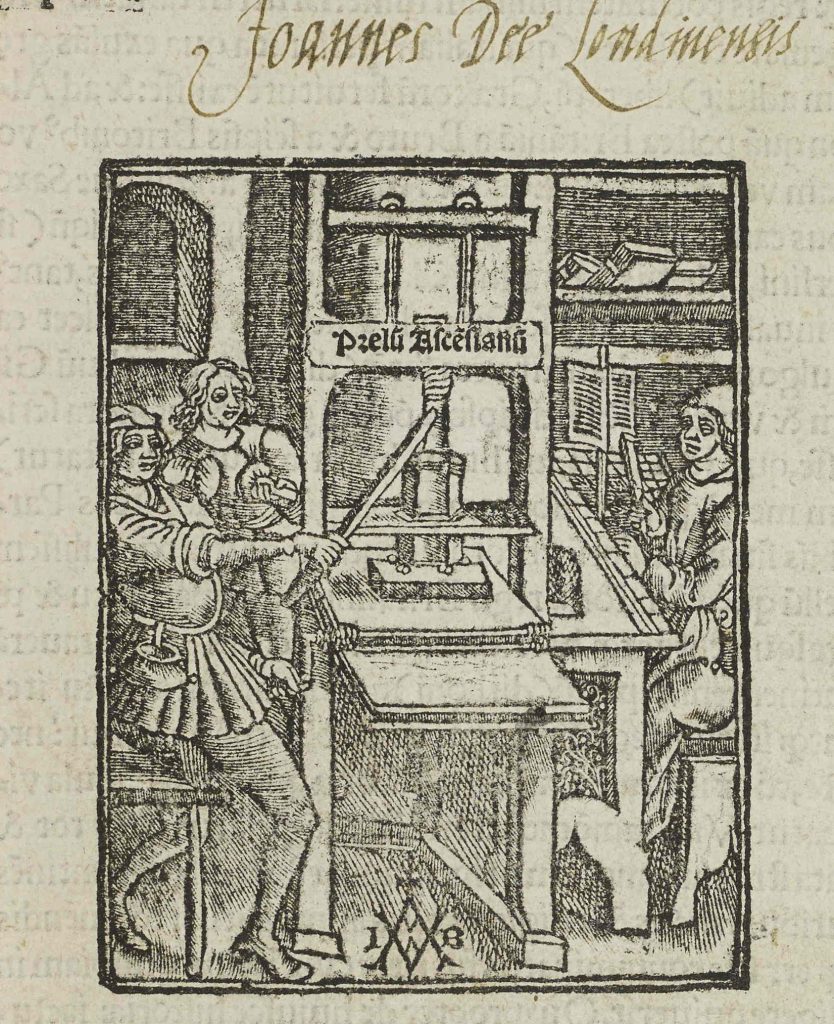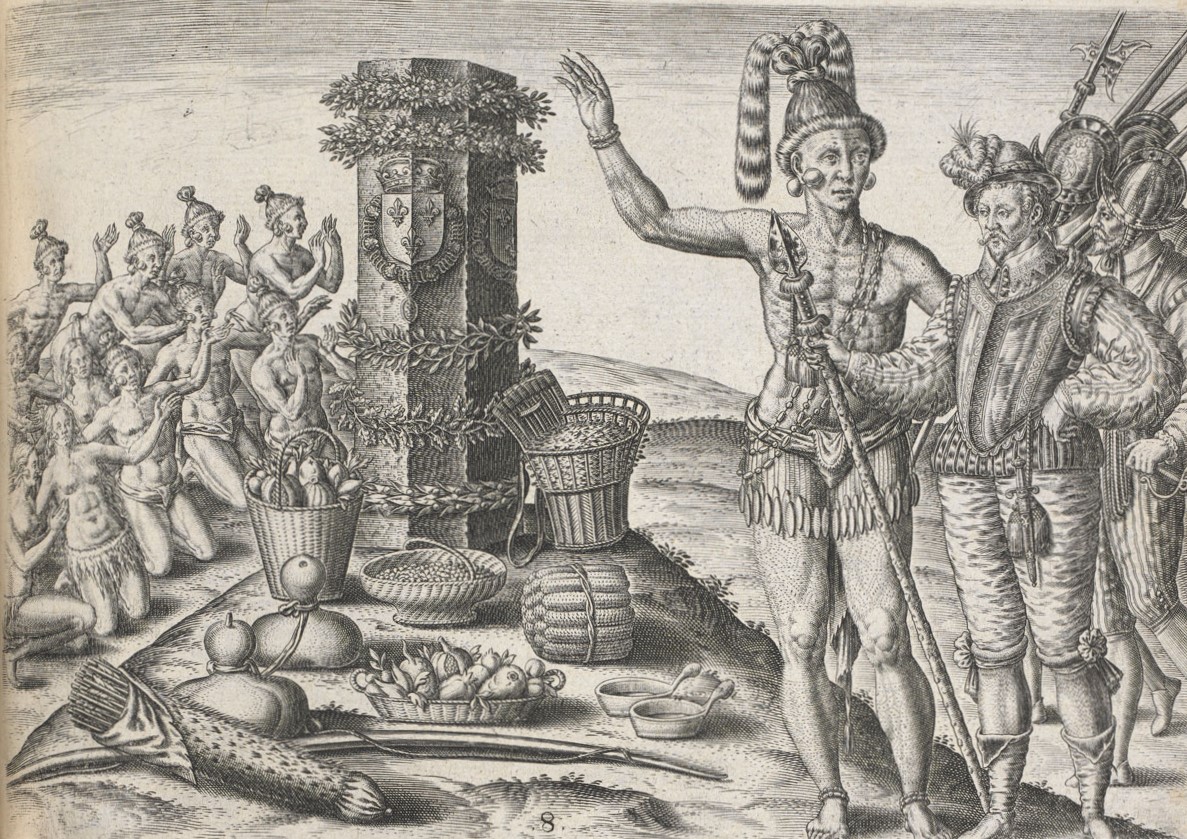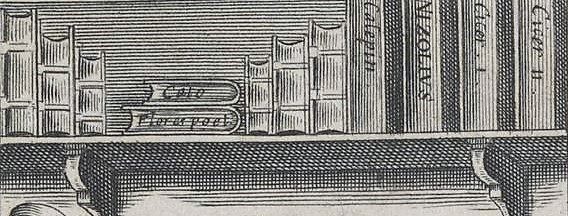Exercises For Secondary Schools
Exercise 1: The Printed, Handwritten Book

The invention and spread of printing dramatically increased the number and scope of books in circulation in early modern Europe. (For more on the invention and spread of printing, please visit the StoryMap provided by the Library of Congress). Over the first fifty years, Europe’s printers began to put their own stamp on the familiar forms of the “book” that had persisted for centuries in manuscript. Cities and universities, especially, became centers of the sale and trade in books, both new and used.
Despite the fact that more, and more standardized copies of books were being produced by Europe’s presses, readers and users still expected their books to be as customizable as the handwritten books which filled their libraries. Even a printed, bound book was never truly “finished” since readers, as they had for centuries when books were scarcer, compiled information, asked questions, and created new knowledge in the margins of their books. This exercise will allow you to explore the ways in which handwriting and the written word continued to shape how readers used their books in early modern Europe.
Procedure:
Navigate through each of the steps below. Clicking on either the links in each step or the manicule icons will launch the appropriate page in the AOR viewer.
 1. What’s in a Name? Part I
1. What’s in a Name? Part I
Not all books printed in the fifteenth, or even the sixteenth, century came with title pages, but this copy of Olaus Magnus’s History of the Northern Peoples Rome, 1555) one has two. Compare the information written by hand on the blank leaves at the front of the book to the title page (in step 2). What does Gabriel Harvey add, and why might he put his own “mark” on this book? What do you think he would have used this information for?
 2.What’s in a Name? Part II
2.What’s in a Name? Part II
The Latin title given by the printer at the top of the page translates to “The preface of Olaus Magnus the Goth, Archbishop of Uppsala, to the History of the Northern Peoples and the Natural Characteristics of the North.”
 3. The Wisdom of the Ancients
3. The Wisdom of the Ancients
Sextus Julius Frontinus was an engineer, architect and military commander in the first century AD. His Stratagemes of warre, here in an English translation, was full of accounts of his own campaigns in France and Britain under the Emperor Domitian, and also made reference to the most valued writings of his contemporaries. Gabriel Harvey, whose mottoes appear on the title page and whose annotations fill the volume, never led an army and lived almost 1,500 years after Frontinus, in an age when military technology had evolved considerably.
Questions for Discussion:
How does the content added by Harvey to the Strategems compare to the front page of the Olaus Magnus’s history?
Where (and with what) do these books “begin?” What do you see on these title pages that you wouldn’t expect to find in a modern book?
Exercise 2: A Fantastic Voyage

John Dee enjoyed one of the most expansive educations of his time, traveling between the University of Cambridge and the universities of Europe to learn and teach Latin, Greek, and Mathematics. His interests were as broad as his education, from the middle of the sixteenth century he was researching England’s ancient history, commenting on its maritime explorations and those of its European competitors, and also casting the horoscopes of famous figures.
In this exercise, we’ll see how Dee applied his critical skills in language, book hunting, and navigation to trace a legendary voyage of the first British people to the island, an origin legend written five centuries before Dee encountered it.
An English translation of the passage you will read from this history is available here.
Geoffrey of Monmouth, History of the Kings of Britain, trans. Lewis Thorpe (London, 1966), pp. 63-73.
Procedure:
Navigate through each of the steps below. Clicking on either the links in each step or the manicule icons will launch the appropriate page in the AOR viewer.
 1. John Dee and Ancient History
1. John Dee and Ancient History
Here, John Dee is reading the second printed edition of a very “ancient” history of England: Geoffrey of Monmouth’s “History of the Kings of Britain,” which was written about five hundred years before the edition was printed (and nowhere near the events that it claims to describe). This history contained some of the most controversial (and popular) stories in England’s history, starting with the tale of Brutus the Trojan, who was said to have journeyed across the Mediterranean to discover and found the island of Britain.
 2. Expert Testimony
2. Expert Testimony
A few pages later, Dee begins to trace the path of the Trojans across the sea, starting with Brutus’ exile from Troy. His comment on the significance of Brutus’ name refers to the Roman geographer Strabo, who tells us that the name “Bretii” means “exile,” or “rebel.” Does Dee believe what he’s reading? How much do you think he trusts the printed book in his hands?
 3. Fact Checking
3. Fact Checking
Dee’s interest in navigation and ancient languages come into play on these two pages, as he tries to determine the locations where the Britons stopped along their way to England. Can you follow his argument? Would you call it critical, apologetic (that is, is he trying to make the information fit the answer he wants) or something in between?
 4. Further Reading
4. Further Reading
On one of the blank leaves at the end of the book, John Dee has noted several of his contemporaries who have “muniments:” histories, chronicles, or other documentations relating to the history of England. Why would it be important for Dee to catalogue who the owners are (or in some cases were) in addition to what the books are called. How might you go about finding a book in the Renaissance?
Exercise 3: John Dee Meets Guacanagarix

Supplemental Reading: Fernando Colón, The Life of the Admiral Christopher Columbus (New Brunswick, NJ, 1997), pp. 146-150.
For most of his life, John Dee was invested in learning as much as he could about the developments and discoveries of the Age of Exploration, as a way to help England create its own maritime empire. However, like many cartographers and commentators, Dee was dependent on written accounts of what had transpired in the New World rather than on firsthand experience. His library included this copy of Fernando Colón’s biography of Christopher Columbus. This passage describes the Spanish encounter with the Taino peoples on Hispaniola, most notably their chief, Guacanagarix, who was initially hospitable to the European arrivals.
Procedure:
Here is a translation of the passage, from The Life of the Admiral Christopher Columbus. Use it to follow the annotated text in Dee’s copy, paying close attention to the steps below. Clicking on either the links in each step or the manicule icons will launch the appropriate page in the AOR viewer.
As you read, think about the following questions:
From his notes, what aspects of this episode do you think John Dee is most interested in?
What do you think his opinion is of the Taino? Of the Spaniards?
 1. Basic Facts
1. Basic Facts
The chapter begins with Dee noting missing pieces in the text (“here lacketh”) and a agreement between the English and Bartolomeo Colón.
 2. Treachery
2. Treachery
Beginning on folio 121, Colón discusses the ineffective leadership of Pedro Margarit, which begins on the second full paragraph of p. 147 in the translation. Unlike your translation, this sixteenth-century book has no spacing to differentiate paragraphs. Can you tell where it starts based on Dee’s notes?
 3. Room for Interpretation
3. Room for Interpretation
Most of the annotations on the back side, or verso, of folio 121 (where the discussion of Pedro Margarit ends) aren’t words. Using your translation, can you figure out what might have been important to Dee as he underlined words and added manicules in the margins? Do you think there is a method to what Dee is doing?
 4. Noteworthy
4. Noteworthy
The bracketed portion of the text on folio 122 next to the word “Note” corresponds to the part of the translation (p. 148, paragraph 2) that begins “The Admiral found the island in a pitiful state, with most of the Christians committing innumerable outrages for which they were mortally hated by the Indians, who refused to obey them.”
 5. True Story
5. True Story
The manicule (pointing hand) preceding Dee’s note: “Note the truth in Guacanagari” is pointing to the passage where Guacanagarix asks Columbus to help him get revenge, while the written note itself includes the passage “This the Admiral agreed to do, believing in the good faith of that cacique.” (148). What about both of these passages might make the account “true” for Dee?
 6. A Matter of Perspective
6. A Matter of Perspective
On the following folio, Dee remarks on the defeat of the Taino caciques by the Spaniards. How does his note about Guacanagarix, at the very bottom of the page, fit in with the earlier notes you’ve encountered?
 7. Reading into Marginalia
7. Reading into Marginalia
Dee’s final note about the casualties among the native populations is neutral in tone. Based on his notes in the rest of this passage, do you think that he would consider this outcome divine punishment or divine favor of the Spanish, as the author suggests?
Back to Teaching with AOR


